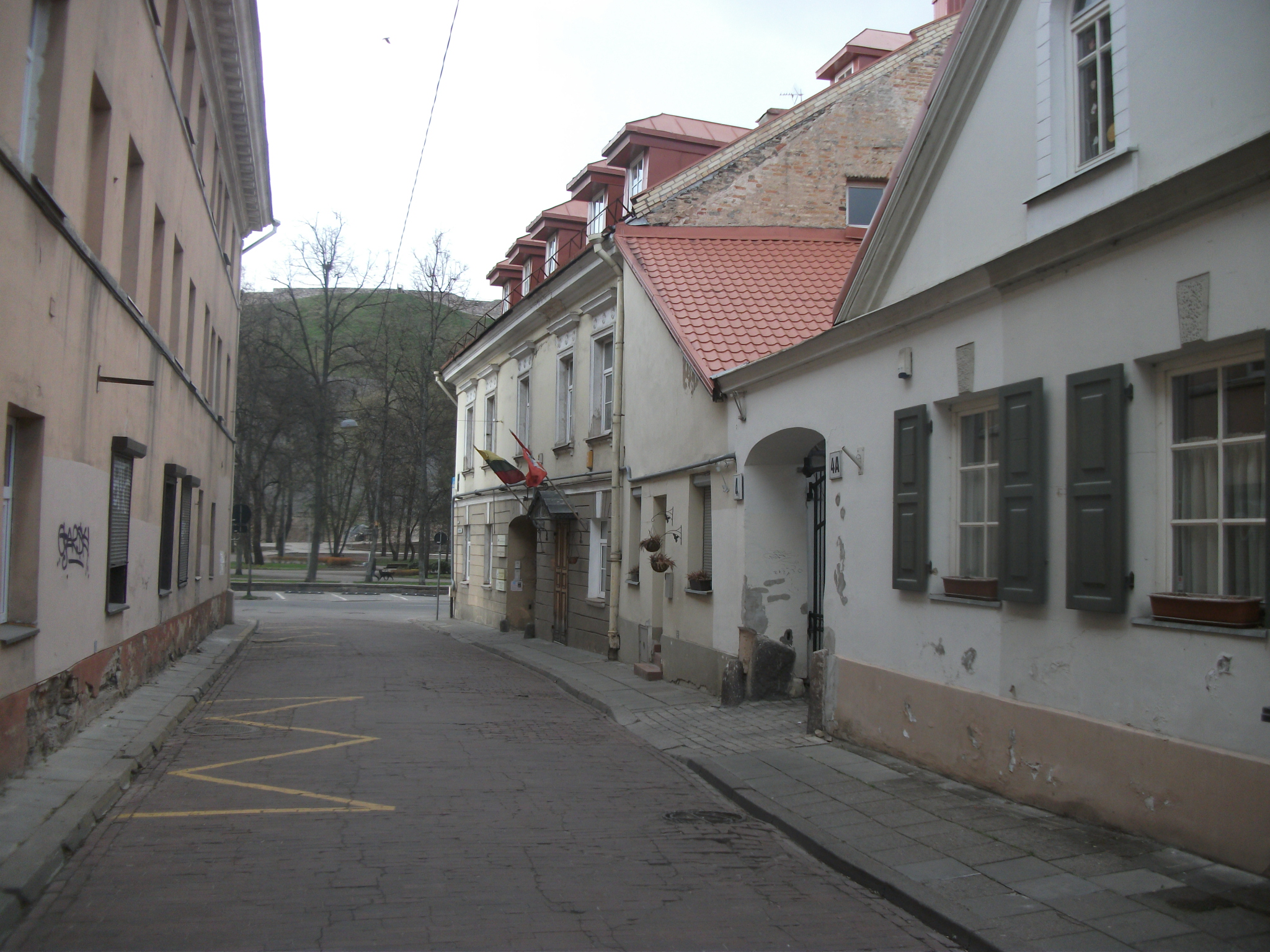Views: 253
 Šiltadaržio St. is ending at Bernardinų St.
Šiltadaržio St. is ending at Bernardinų St.
 Art Printing House Culture Center with the Theater in the street
Art Printing House Culture Center with the Theater in the street
 In the streeet, there is a Toy Museum and other cultural atractions
In the streeet, there is a Toy Museum and other cultural atractions
All photos are copyrighted by Vladislav B. Sotirovic
© Vladislav B. Sotirovic 2020
RELATED POSTS

Wonderful panoramic view can be seen from the roof (platform) of Gediminas Tower (Upper Castle Tower)Despite wars and destructions, the architectural ensemble of Vilnius Old Town remains unique. Baroque domes and towers of Vilnius Old Town coexist with an irregular medieval city plan Vilnius Old Town is lacking German or Scandinavian features, rather reminiscent of Prague or Rome, Vilnius differs greatly from the other Baltic capitalsAll photos are copyrighted by Vladislav B. Sotirovic© Vladislav B. Sotirovic 2019
Continue Reading
One of the focal touristic attractions in the Žvėrynas district of Vilnius is the traditional type of the wooden houses coloured in different coloursŽvėrynas means "menagerie" or "beastland". In the 19th century a forest grew in this areaSince 1893, the process of urbanization of the district of Žvėrynas started with the building of wooden and brick villas and summerhouses. Today, this district of Vilnius is a prestigiuos residential part of the capitalAll photos are copyrighted by Vladislav B. Sotirovic© Vladislav B. Sotirovic 2020
Continue Reading
Monument to the Gaon of Vilnius Elijah ben Solomon Zalman (1720-1797) called "Jewish Saga". The monument is located on the place where he lived. The house was destroyed during WWII and it was not restored. Nearby the monument there is a memorial plaque in Lithuanian and Hebrew on a building at Žydų (Jewish) Street Antokolski Street in Vilnius Old Town's Jewish Quarter. In this street the famous 19th century sculptor Mark Antokolski lived in 1843-1862. It was here he created his first sculptors depicting the inhabitants of his native quarter, which later gained recognitionMėsinių Street in Vilnius Old Town. That was one of the longest and most important street in the Jewish QuarterAll photos are copyrighted by Vladislav B. Sotirovic© Vladislav B. Sotirovic 2019
Continue Reading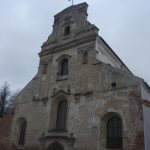
The church is Gothic, with some Baroque forms that it acquired in the late 18th centuryIn 1812 the church was partly destroyed by the French army that used it as a granary. Since 1864 the church was closed and converted into an archive The church adjoins a monastery, the oldest in Lithuania, whose construction began in Gediminas' times (in 1334)All photos are copyrighted by Vladislav B. Sotirovic© Vladislav B. Sotirovic 2018
Continue Reading
Trakų St. finishes where it meets Pylimo St, which runs along the course of the old city wall. There used to be a gate here, which was pulled down together with the wall at the very beginning of the 19th century. In the niche of the Umiastowski estate (Trakų St. 2) there is a Statue of "The City Guard" (1973) In Trakų Street, there is the Church of Our Lady of the Assumption that was founded here by the noble Goštautas family in 1387, the same year as Lithuania became converted to Christianity. However, it is believed that the church with the monastery existed even earlierOne of courtyards of the buildings in Trakų StreetAll photos are copyrighted by Vladislav B. Sotirovic© Vladislav B. Sotirovic 2020
Continue Reading
The life and work of Dr. Jurgis and Marija Šlapelis reflects the life of the region of Vilnius from the second half of the 19th century to 1940. Both of them have been cultural figures in Lithuania. Marija was actress. They published Lithuanian books that were banned at that timeDr. Jurgis and Marija Šlapelis owned the only Lithuanian language bookstore in Vilnius during 1906-1949. The Šlapelis family bought the house in 1926. Before, it was a goldsmith's workshops, and later housed a small holet called the Hotel de Philadelphie, and a wine shop The building is an example of the 17-th century architecture. Dr. Jurgis died in 1941, and Marija in 1977 at the age of 97. After WWII, the house was nationalised, and, therefore, Marija Šlapelis was forced to live in two small rooms upstairs, with the only access to them through another person's quarters. Marija stipulated in her ...
Continue Reading
The Old Campus in the Old town - Rectorate building. On April 1st, 1579 the King of Poland and Grand Duke of Lithuania Stephen Bathory issues a royal charter recognizing the Jesuit College into a universityThe Old Campus in the Old town - Rector's Office and former Astronomical Observatory building (right) and the Central Library building (left) with the Central Library Courtyard in front of the buildingsThe History Facutly building (left) and the Central Library building (right) with the arched gates to Mikalojus Dukša Courtyard (left) and Mathias Casimir Sarbievius Courtyard (forward). The Old Campus of the university has 13 courtyardsAll photos are copyrighted by Vladislav B. Sotirovic© Vladislav B. Sotirovic 2018
Continue Reading
Mindaugas Bridge is constructed in 2003. It has the name of the only Lithuanian King crowned on July 6th, 1253On the foothill on the left riverside of Neris, there is a Renaissance building of Old Arsenal followed by the buildings of House of the Castle Keeper and New Arsenal On the right riverside of Neris, a new business center of Vilnius is growing during the last two decadesAll photos are copyrighted by Vladislav B. Sotirovic© Vladislav B. Sotirovic 2019
Continue Reading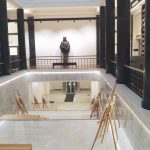
One of the meeting rooms in the library for public lectures, book presentations and discussionsOne of the exibition hallsOne of the Reading RoomsAll photos are copyrighted by Vladislav B. Sotirovic© Vladislav B. Sotirovic 2020
Continue Reading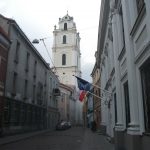
In this street, it was used to be a market place where it meets Pilies street. The first Town Hall is also believed to have stood on this spot Pharmacy house in St. John St. No. 5. Georg Schulz's pharmacy operated in this house since 1639. During the war in 1655, the house was burned down. In 1781, pharmacist Koszyk acquired the ruined building and reconstructed it The Pac estate. Since 1628, the building belonged to the Pac magnate family of the Grand Duchy of Lithuania. In 1783, the dilapidated building was bought, renovated and decorated by the Chancellor of the Grand Duchy of Lithuania - Alexander Michael Sapieha. Currently, the building belongs to the Polish Embassy All photos are copyrighted by Vladislav B. Sotirovic© Vladislav B. Sotirovic 2020
Continue Reading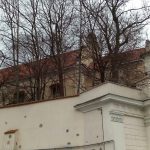
The church was originally Gothic but in 1750-1755 it was restored according to design by Franz Ignatius Hoffer and acquired some late Baroque and Rococo featuresNearby the church building stand the 17th-18th-century buildings of the Carmelite Monastery which had a rich archive and library. A study centre opereted there. In 1797-1944 it housed the Ecclesiastical Seminary Today the buildings are used by the Centre for Book Research and Libraries, and the church is closed to the publicAll photos are copyrighted by Vladislav B. Sotirovic© Vladislav B. Sotirovic 2020
Continue Reading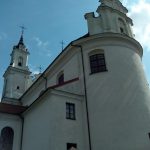
In 1695 the Trinitarians set up a community on the right bank of the River Neris just to the north of Vilnius. Therefore, the place is known as Trinapolis (a city of the Trinitarians)In 1750-1760 Trinapolis was reconstructed in the late Baroque style. It was a summer residence of Vilnius bishopsIn Soviet times the church was closed down. Today, the monastery is used as a retreat house by an order of nuns, and the church is not regularly openAll photos are copyrighted by Vladislav B. Sotirovic© Vladislav B. Sotirovic 2022
Continue Reading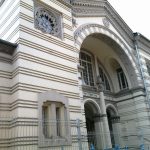
Choral Synagogue is the place of the only working synagogue and school "Tarahat Hakodesh" in Vilnius This synagogue is built in the Oriental Moorish style and is only survived one out of some 105 before WWII synagogues and other Judaic prayer housesThe exterior contains an inscription in Hebrew "A prayer house is sacred for all nations", and above the pediment the tablets with the Ten Divine Commandments are representedAll photos are copyrighted by Vladislav B. Sotirovic© Vladislav B. Sotirovic 2020
Continue Reading
One of Baroque gates of the Sapieha ParkAmong the surviving details of the palace are Baroque façades with stucco relief works by Pietro Perti and three Baroque gates. The park is the only one in Vilnius Vilnius with features of a regular Baroque park The palace and the gates were decorated with sculptures and frescoes created by masters who had worked in the Church of St. Peter and St. Paul and St. Casimir's Chapel of the Cathedral Basilica in VilniusAll photos are copyrighted by Vladislav B. Sotirovic© Vladislav B. Sotirovic 2019
Continue Reading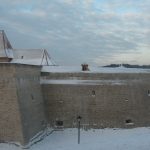
The Bastion is comprised of a tower, cannon room and 48 m. the long corridor connecting it with the towerThe walls and moats of the Bastion were excavated in 1965-1970, and the canon room was renovated in 1985-1986 The entire Bastion is converted into a museum, and since 1987 it houses an exhibition of defensive fortifications and weaponryAll photos are copyrighted by Vladislav B. Sotirovic© Vladislav B. Sotirovic 2019
Continue Reading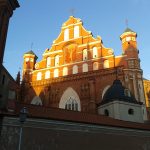
The main altar with Late Baroque forms, made from dark woodInterior of Church of St. Francis and St. BernardineWhile restoring the church, one of the largest mural paintings from the Late Gothic and Renaissance periods was discovered. They depict scenes from the Bible, Franciscan legends and symbolic imagesAll photos are copyrighted by Vladislav B. Sotirovic© Vladislav B. Sotirovic 2020
Continue Reading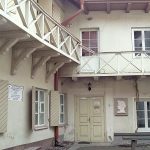
In this house, belonging at the time to a university professor, Adam Mickiewicz stayed for a short period in 1822 and completed the poem "Gražina"It is small museum of three rooms but it is currently being expended. Among the exhibits are several portraits of Adam Mickiewicz and some period furniture, including a table and chair from Kaunas and a chair from Paris that the poet himself usedThe exhibition includes among the many volumes of his work in foreign languages, for instance, a Persian translation of his "Sonnets from the Crimea" All photos are copyrighted by Vladislav B. Sotirovic© Vladislav B. Sotirovic 2020
Continue Reading
Christmas Tree decoration at the Cathedral Basilica Square in Vilnius. The belfry is seen in the backgroundChristmas decoration in front of the principal building of the castle complex in Vilnius Old Town - Cathedral BasilicaCathedral Basilica of Vilnius is erected on the place of the pagan altar with a ceasred fire to the pagan god Perkūnas (god of Thunder)All photos are copyrighted by Vladislav B. Sotirovic© Vladislav B. Sotirovic 2019
Continue Reading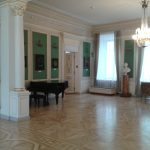
The family of the noblemen Chodkiewicz bought a house that stood on this site, and transformed it into a Renaissance residenceGrand Hall of the Vilnius Picture Gallery in former Chodkiewicz PalaceThe Classicist interior of the palace is a notable feature of the building of former Chodkiewicz Palace, today the Vilnius Picture GalleryAll photos are copyrighted by Vladislav B. Sotirovic© Vladislav B. Sotirovic 2020
Continue Reading
A geographical centre of Europe - 25 km far from Vilnius. From 2015 Summer You will get a special Certificate that you have visited the Geographical center of Europe. Don't miss the chance to get it for freeThe Baltic States of Europe - Estonia, Latvia & LithuaniaVytis (The Knight) - The Coat of Arm of both historical Grand Duchy of Lithuania and present-day the Republic of LithuaniaOrigins of images: Facebook, Twitter, Wikimedia, Wikipedia, Flickr, Google, Imageinjection & Pinterest.Read our Disclaimer/Legal Statement!Donate to Support UsWe would like to ask you to consider a small donation to help our team keep working.
Continue ReadingVilnius Old Town Panoramic View
Traditional Wooden Houses in Žvėrynas
Jewish Quarter (II)
Church of the Assumption of the Holy Virgin Mary and the Franciscan Monastery
Trakų Street in Vilnius
The Šlapelis House Museum
Vilnius University Est. 1579
Vilnius Panorama of the Neris River
Martynas Mažvydas National Library of Lithuania (Inside)
St. John Steet in Vilnius
The Church of St. George the Martyr
The Church of the Holy Trinity and Trinapolis in Vilnius
Choral Synagogue in Vilnius
Sapieha Estate and Park
The Bastion of the Vilnius Defensive Wall (I)
Church of St. Francis and St. Bernardine (Interior)
The Adam Mickiewicz Museum
Vilnius Christmas Tree
The Vilnius Picture Gallery (Chodkiewicz Palace)
Lithuania – Geographical Center of Europe

